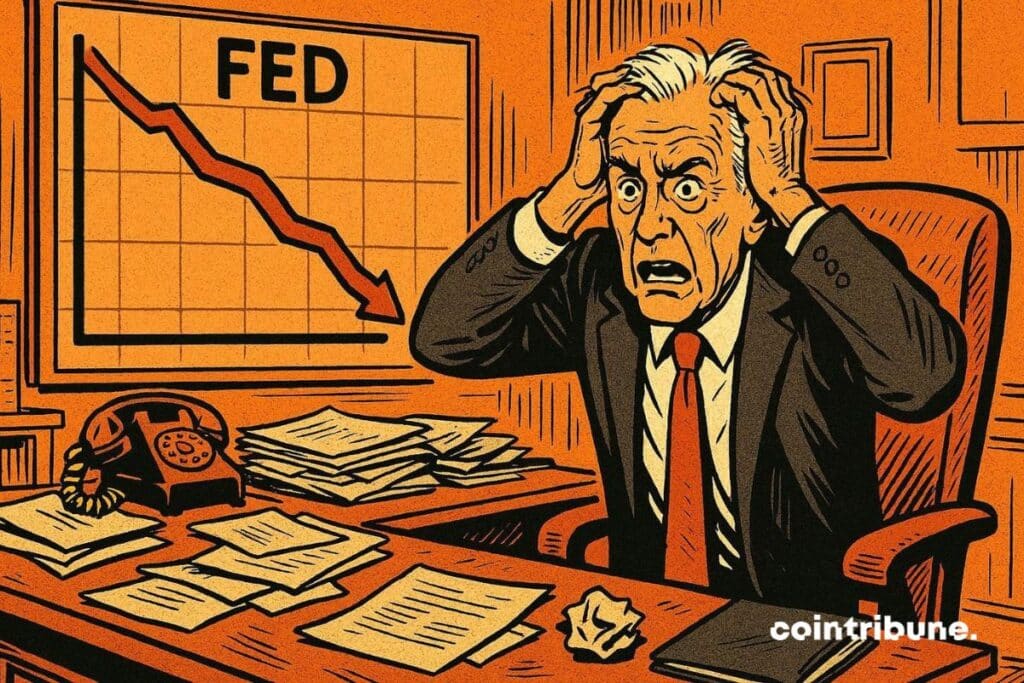Shocking PPI Data: The Fed Faces a Decisive Choice for December
The September 2025 PPI report has finally been released, revealing persistent inflation that puts the Fed in a dilemma. While markets anticipate a rate cut in December, cryptos could be the big winners. Here is how these economic data influence the future of digital assets.

In Brief
- September’s PPI shows an increase of 0.3% monthly and 2.7% yearly, revealing persistent inflation.
- Markets anticipate a 90% chance of a Fed rate cut in December, but lack of recent data adds major uncertainty.
- A December rate cut could boost cryptos, while a status quo might trigger a harsh correction.
September 2025 PPI Sounds the Alarm: Inflation Remains a Challenge for the Fed
The September 2025 PPI, published late due to the administrative shutdown, shows a 0.3% monthly increase, or 2.7% annually. While this rise aligns with expectations, it confirms inflation remains a challenge for the Federal Reserve (Fed). Moreover, the core PPI, which excludes volatile food and energy prices, only rose by 0.1%! However, it shows an annual increase of 2.9%, slightly above forecasts.
This situation reflects persistent inflation, mainly driven by goods such as:
- Gasoline (+11.8%);
- Meats;
- Corn, while services remain stable.
For the Fed, these September PPI data complicate the December decision: should it prioritize fighting inflation or support a slowing labor market? Analysts highlight that this pressure on goods prices could persist, limiting the central bank’s room for maneuver.
Rate Cut in December: 90% Probability, but What Are the Risks?
Markets now estimate a 90% probability of a rate cut in December, up from only 30% a few weeks ago. This rise in expectations is explained by recent statements from Fed officials, like John Williams, president of the New York Fed, who mentioned a “margin for an adjustment” of rates. This December meeting is crucial as it takes place amid an economic slowdown and inflation still above the 2% target.
However, the lack of recent CPI and employment data, delayed by the shutdown, adds a layer of uncertainty. The Fed will have to decide with incomplete information. Two scenarios emerge:
- A 25 basis points cut, widely anticipated by markets;
- An unexpected status quo, which could trigger a sharp correction.
Investors are closely watching Jerome Powell’s upcoming statements to assess the risks.
December 2025: A Rate Cut Could Trigger a Historic Crypto Rally
A Fed rate cut in December could energize the crypto market, as recent reactions show. As soon as cut expectations rose, the total crypto market capitalization increased by 1.5%, reaching $3.02 trillion. Cryptocurrencies, uncorrelated to traditional currencies, become more attractive in an environment of a weakened dollar and increased liquidity.
Low rates free up capital toward risky assets like crypto ETFs, staking, and DeFi. If the Fed confirms a cut and signals further easing in 2026, a broad rally could start. Conversely, an unexpected status quo could cause a sharp correction, with fluctuations of ±20-30% within 48 hours after the announcement. Bitcoin , often used as a market indicator, could benefit from institutional capital inflows, while Ethereum would see increased activity on its network.
The Fed finds itself at a crossroads: cut rates in December to support the economy or keep them to control inflation. The crypto market, sensitive to liquidity and the dollar, could benefit from monetary easing. But what happens if the Fed surprises the markets? The answer will shape the future of digital assets in 2026.